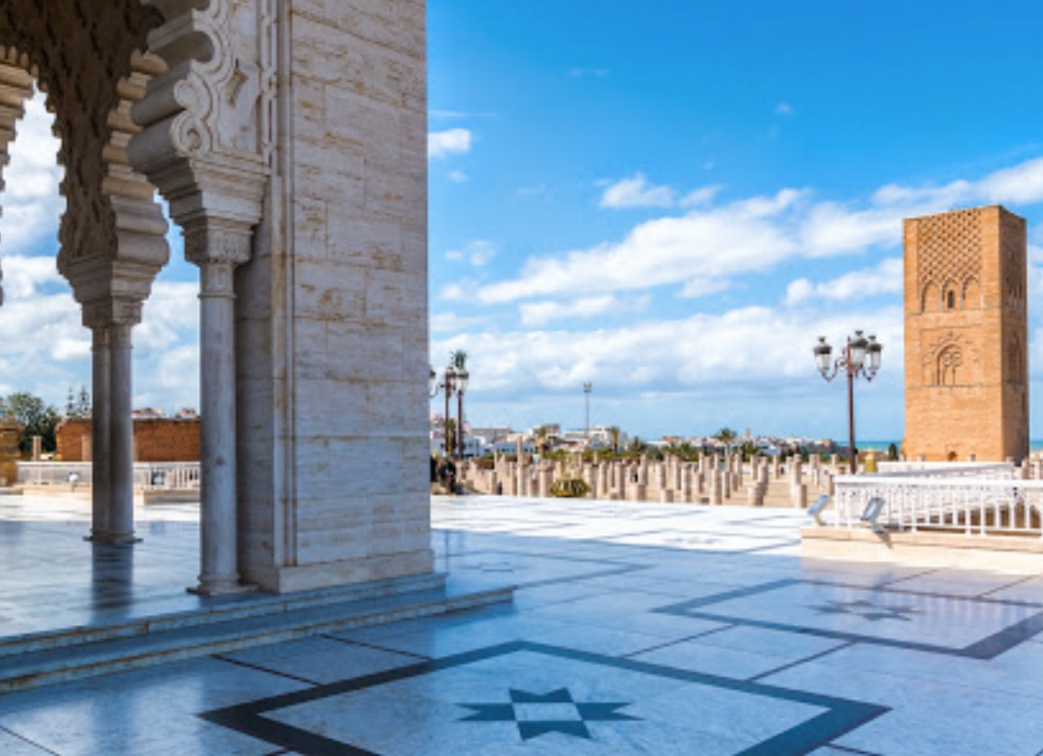Hassan Tower: A Testament to Morocco’s Imperial Grandeur
Table of Contents
Introduction
Standing solemnly on the banks of the Bou Regreg river in Rabat, the capital city of Morocco, Hassan Tower (Tour Hassan) is a poignant symbol of both the city’s historical significance and its unrealized architectural ambitions. Initially intended to be the largest minaret in the world, the construction of this grand tower was halted abruptly, leaving behind a fascinating, incomplete structure that captivates historians, architects, and tourists alike. Today, Hassan Tower remains a central piece of Morocco’s cultural heritage, reflecting the grandiose visions of its past rulers and the rich Islamic architectural tradition.
Historical Background
Hassan Tower was commissioned by the Almohad Caliph Yacoub al-Mansour in the late 12th century, around 1195, as part of an ambitious project to build the largest mosque in the Western Muslim world. The mosque, alongside the tower, was intended to demonstrate the might and spiritual fervor of the Almohad dynasty, which had made Rabat a major political and military capital. However, construction ceased in 1199 following the sudden death of Yacoub al-Mansour, leaving the tower at about half of its intended 86 meters (260 feet) height.
Architectural Design
The Tower
The Hassan Tower is a stunning example of Almohad architectural style, characterized by its stark, geometric simplicity and robust forms. It rises to approximately 44 meters (144 feet), its massive, partially constructed form made from red sandstone. The design features corner shafts that would have supported the additional height, and the facade is marked by intricate motifs and Koranic inscriptions, each reflecting the artistic and religious minutiae of the era.
The Mosque
The remains of the mosque’s foundation are visible around the tower, with the remnants of several hundred columns outlining what would have been an expansive prayer hall. Despite its incomplete state, the site gives a clear indication of the mosque’s potential scale and grandeur, highlighting an architectural layout that was both ambitious and harmonious with the spiritual functions it was meant to serve.
Significance and Symbolism
Hassan Tower serves as a potent symbol of both human ambition and the transient nature of earthly endeavors. It stands as a reminder of the Almohad dynasty’s strength and the historical shifts that have shaped Morocco. The site’s location in Rabat, a city with deep historical and political significance, further enriches its symbolic value, merging the country’s past with its present status as a capital.
Preservation and Tourism
Recognized as a UNESCO World Heritage site as part of the Rabat, Modern Capital and Historic City: a Shared Heritage ensemble, Hassan Tower and its surrounding area are preserved as key historical landmarks. Efforts to maintain the site ensure that it remains an integral part of Morocco’s cultural heritage, attracting thousands of tourists annually who come to marvel at its history and beauty.
Cultural and Educational Role
The site around Hassan Tower is not just a tourist destination but also a place of education and cultural significance. It hosts various cultural events and activities, including national celebrations and public speeches. The site is also used as an educational resource, helping to teach visitors and local students about Morocco’s architectural history and Islamic culture.
Visiting Hassan Tower
Visitors to Hassan Tower can explore the site through guided tours, which offer insights into its historical context and architectural details. The area is accessible to the public and provides panoramic views of Rabat and the nearby Atlantic coast, making it a picturesque spot for both learning and leisure.
Conclusion
Hassan Tower stands as a majestic relic of Morocco’s imperial past and architectural ambition. Despite its unfinished state, or perhaps because of it, the tower embodies a unique historical narrative that continues to resonate with people from around the world. It remains a testament to the rich cultural tapestry of Morocco, reflecting the complexities of its history and the enduring beauty of its architectural traditions.
Additional Resources
For those interested in exploring more historical sites in Rabat, the nearby Mausoleum of Mohammed V and the Chellah necropolis offer further insights into the rich history of Morocco’s dynastic past. These sites, along with Hassan Tower, create a comprehensive cultural itinerary for anyone looking to delve deeper into the historical and architectural heritage of Morocco’s capital.
As Seen On:
Official Private Driver Morocco has been featured or mentioned by leading media outlets including Business Insider, Street Insider, Central Charts, Yahoo Finance, Bar Chart, and Market Watch, recognizing our commitment to premium transportation services and exceptional customer experience.




Mausoleum Of Mohammed V: A Monument Of Majesty And Memory - Private Driver Morocco
[…] in exploring more of Rabat’s historical and cultural sites, nearby landmarks such as the Hassan Tower and the Chellah necropolis offer further insights into Morocco’s rich history. Together with the […]